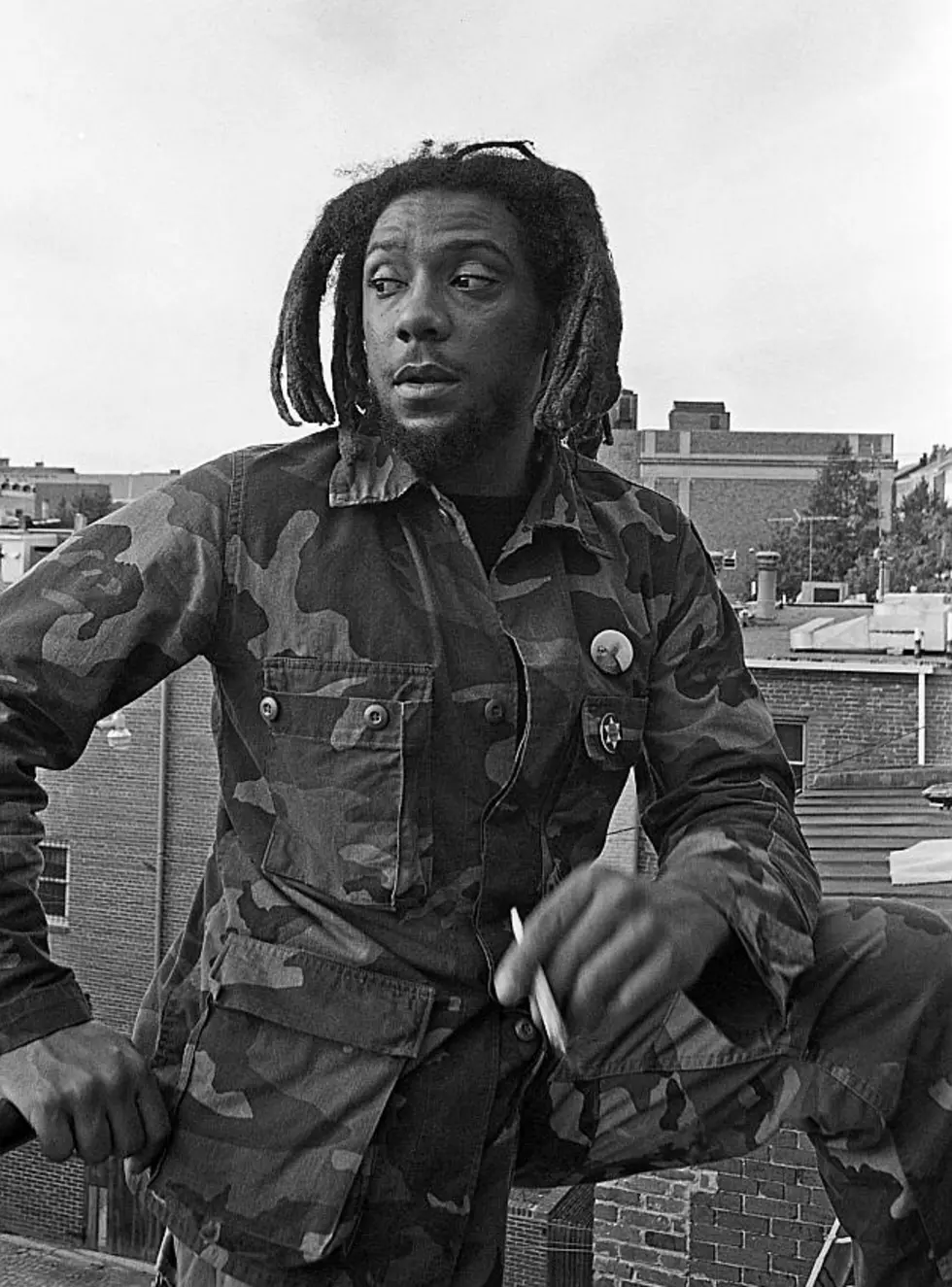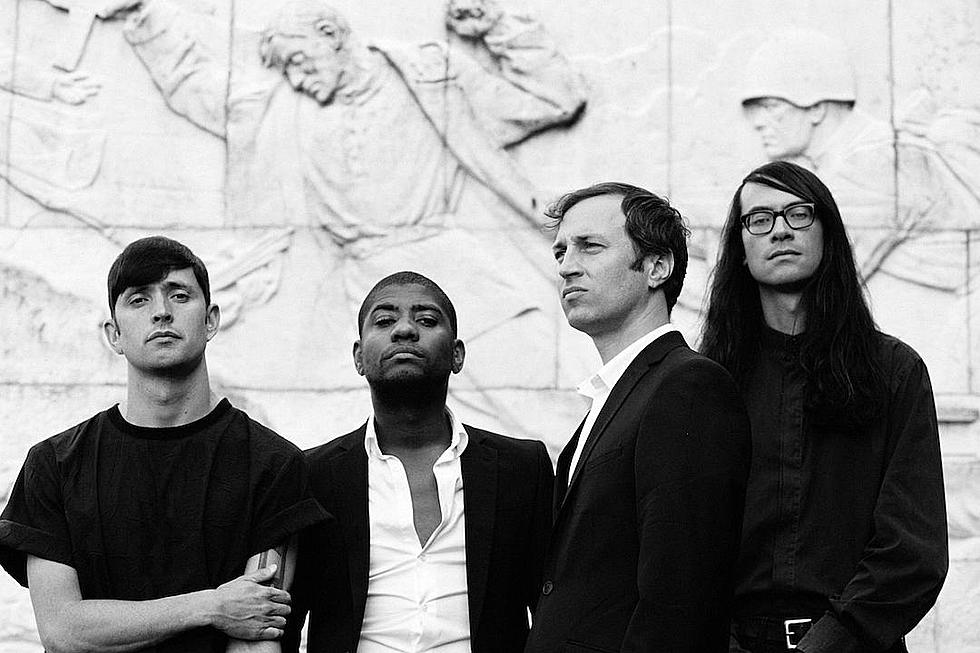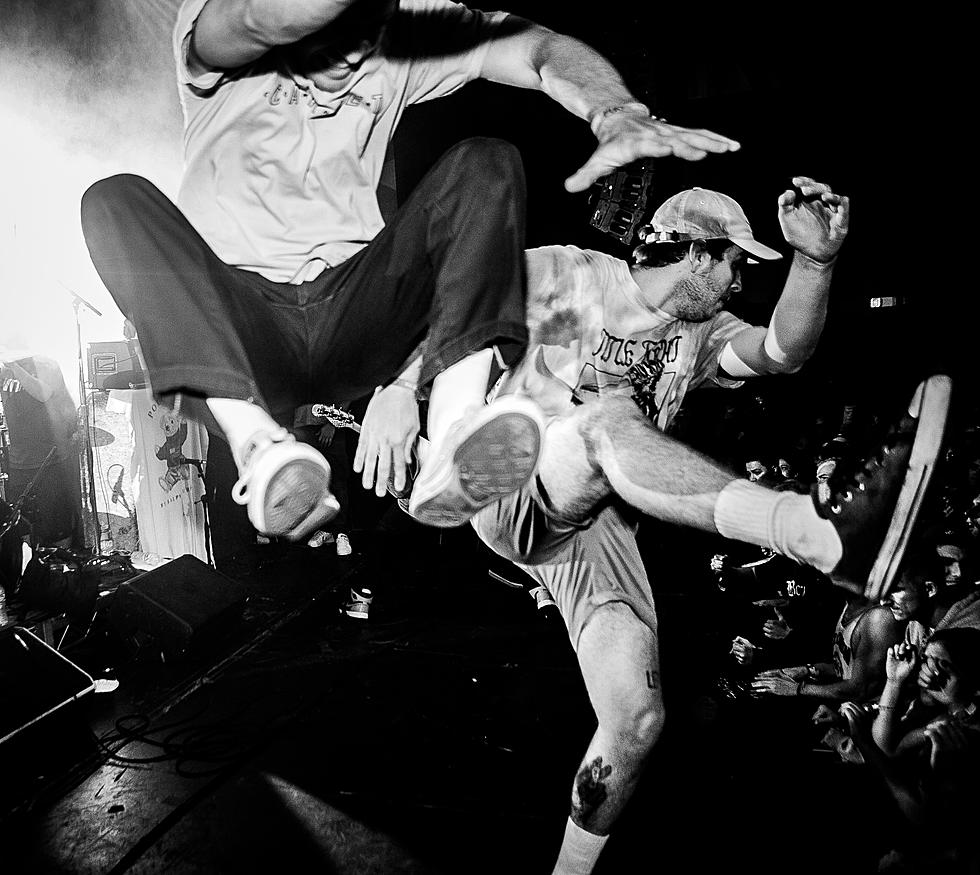
Sailin’ On With Bad Brains’ H.R. on the Eve of Brain Surgery
Paul D. Hudson — better known as H.R., or Human Rights — has been getting headaches for a decade or two now. The painkillers he is on to combat the oppressive pain make him a little unsteady in his gait, and our scheduled interview is pushed back 20 minutes to give him time to eat. We are a room apart in a large media building in midtown Manhattan, at the beginning of what will prove to be a rigorous press day. Five minutes later, by way of the next interview’s premise, someone delivers the news that H.R. has just now learned of Wikipedia’s existence, and will be shown his page to check its veracity on a radio show in an hour or two.
H.R. was, at one point in his life, a prism that took in the first inklings of hardcore punk and showed the spectrum of what it could be. Nearly four decades later, people move, dress and talk like H.R. did in the late ’70s and early ’80s. When he told the crowds to “mash it up,” they weren’t on his level, and they heard "mosh," and they’re still moshing. H.R. is not moshing, backflipping or screaming anymore. His doctor has informed him that he cannot scream or sing in that manner, though he doesn’t mourn the loss. Despite impending brain surgery on February 21, H.R. is quick to mention that the original Bad Brains lineup is writing music and planning on recording a new album. H.R. isn’t the only one with serious health issues, either; their guitar player, Gary Miller, a.k.a. Dr. Know, suffered a severe stroke last year.
It’s not hard to talk about H.R. in elevated terms. The live footage that exists isn’t fried and terrible like most of the stuff from that era and scene. You can turn on the famous Live at CBGB 1982 set for anyone unfamiliar, and it speaks for itself — they are furious, precise, melodic and frenzied all at once, and it is undeniable. Unlike so many things about a codified scene, Bad Brains will still make sense to someone with no clue; they endure beyond genre. The only appropriate comparison to H.R.'s early live performances is James Brown, and when he is asked if he had any influences growing up that affected his live performance, his only answer is James Brown.
When the credits roll on the recent documentary made about the man, Finding Joseph I, nearly every talking head from every era of H.R.’s career calls him a “living legend.” The thing about living legends is that they tend to be inaccessible. Since H.R.’s kindness and punk rock ethos disregard physical inaccessibility (you can seek him out if you try hard enough) — what people who do find him are left with is a lingering sense that they’re missing something, or that he is. There’s an underlying sense that he still owes us something. Despite being credited with so many accolades, so many firsts, despite the evidence put forward on record and on tape, he remains inundated with questions in a way that other legendary performers simply aren’t — perhaps because they never allowed themselves to be.
In person, H.R. is a little older than you expect, with what people tend to call “kind eyes.” His energy is calm, but his presence is felt, and his register is high and soft, so you have to lean in to listen when he speaks. Like many people who are leaders in some form or another, he answers the parts of a question he wants to, or the question he wishes you had asked. This is most readily employed if your line of questioning hopes to grasp how he “feels” about something.
He isn’t one to illuminate why he did one thing or another, but he is quick to point out that there will be new Bad Brains music, it will be all reggae, and, when asked about the documentary, he emphasizes what a great opportunity it was to present different perspectives on himself, in particular. There are several Rastafarian figures that represent as much screen time as hardcore scions like Ian MacKaye, or even a latter-day heavy music figurehead like Chino Moreno. These are voices largely unheard or ignored when hardcore historians go looking for more of, well, something, in the depths of H.R. The fact of the matter is, no matter his personal state, or his relationship with the outside world, he has consistently voiced the same interests and advocated for the same things for decades now. It’s not hard then to draw conclusions on why he’d give so many opaque answers about his feelings. No one has bothered to listen after asking him.
Then there’s the headaches. On February 21, H.R. will get surgery for a rare headache disorder he’s likely been living with for decades, but was only diagnosed with a few years ago, called SUNCT. Prasad Shirvalkar, a clinical pain management fellow at the University of California, San Francisco, with a PhD in neuroscience, described it as follows: “The disorder affects the Trigeminal nerve, which supplies sensation to most of the face and head, resulting in sharp stabbing pain that shows itself as 1-100 headaches a day that can last from one second to 10 minutes each. A closely related disease called Trigeminal Neuralgia has been described as the worst pain that human can experience, and typically involves jolts of searing electric pain over the face. What's worse is that these attacks can be triggered by simple activation of the trigeminal nerve (brushing teeth, chewing, touching his face, smiling, talking or shaving).”
There has been a lot of chatter about H.R.’s mental well-being since the mid-’80s, and while those issues seem to exist, the concern over them is often presented selfishly, as if H.R.’s mental health is the only thing standing in the way of Bad Brains' glorious return to early ’80s form. There’s no evidence to support this, although it’s been heavily implied over the years. The fact remains that H.R. left the band at their first peak to go play reggae, and left two times after that for similar reasons. The fact that he sought out solidarity during that period could be explained by the demands of his headache disorder, which would make speaking — let alone screaming — a dangerous, even scary proposition.
Certainly, mental health and headaches are part of a broader picture, but seemingly wild decisions made by visionary artists are not usually judged so harshly. Perhaps it is the level of accessibility you find in H.R. versus, say, James Brown. Something about the accessibility seems to open up a prolific career to more examination than, say, a lesser singer from a bigger band who killed their friend in a DUI accident. H.R.’s over-the-top car story is told by a wide-eyed suit from Madonna’s now defunct Maverick Records, and goes as follows: Someone from a car dealership doesn’t believe H.R. has money, so he calls the record label guy, who then asks a grown man what kind of car he’s buying, and is still horrified to this day that he was buying a limo to drive himself.
While that’s an odd move by an eccentric man, whether H.R.’s decision to buy a limo was fueled by mental illness isn’t as telling as the actions of everyone around him when he made the autonomous decision as a legal adult to do so. While the documentary illustrates a person struggling with personal problems over the course of a remarkable life, it also paints a clear portrait of an incredibly skilled, intelligent, curious man who’s willfully difficult, yet can exist outside of and next to any problems he might also have. He’s a person who named himself Human Rights, and has been relentlessly seeking autonomy through tremendous adversity from outside and within for nearly his entire life.
About halfway through what amounted to a half-hour interview, H.R. touched on being regarded as important instead of just good, and yet still being underestimated and occasionally met with befuddlement. “It’s surprising, because [Bad Brains] made up our minds early in our career that we wanted to make something that people could relate to,” he says. Just as calmly, he addresses their sonic shift in a short sentence with almost a shrug: “Different sounds, different movements, different scene.”
After being asked the same questions for all these years and giving the same answers — after living in solitude, emerging when he wants, getting help when he wants, and providing music when he wants, while being treated as both a troubled oracle and mystery — it might have been that simple, even if it was never easy. At the end, he smiles and shakes my hand, about to take a close look at his own Wikipedia entry, then another interview, and then another before a panel after another screening of the documentary. He still has a month before the surgery for his headaches, and then it’s time for more Bad Brains.
Howie Abrams' Finding Joseph I: An Oral History of H.R. From Bad Brains is available now.
More From CLRVYNT









